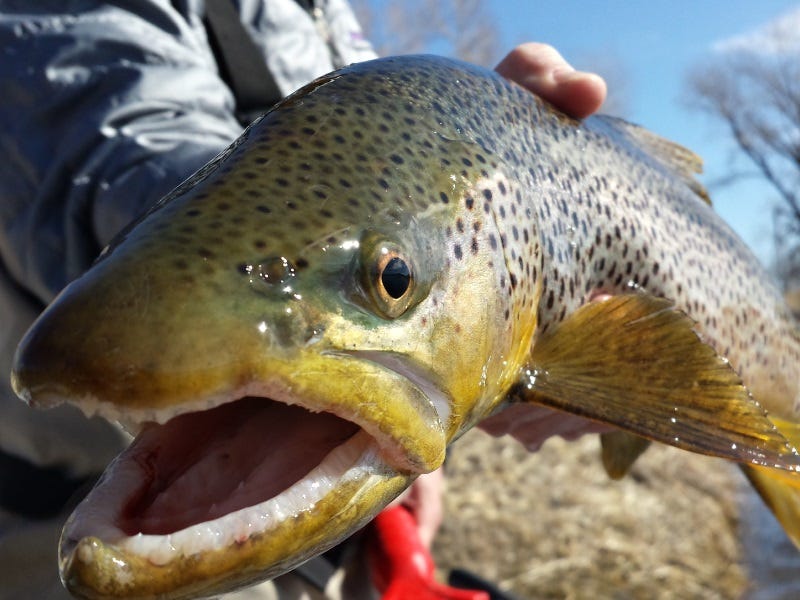What’s a good fly for trout?

 Today a gentleman walked into the fly shop and said, "What’s a good fly for trout?" It’s a very simple question that we hear time and time again. We can pick one of several hundred flies we have to sell.
Today a gentleman walked into the fly shop and said, "What’s a good fly for trout?" It’s a very simple question that we hear time and time again. We can pick one of several hundred flies we have to sell.
They are all good in the right place at the right time. That’s why we have them. Rick likes to say they are all guaranteed on the end of his line. The challenge to the fly fisher is to learn the when and where. The simplest answer to the question is all of them, some of the time.
Summertime Flies: Choosing A Trout Fly
We can help narrow the search with some basic information on when and where anglers are fishing. The more information anglers share with us about their fishing situations, the better we can diagnose their fly needs.
As we move into early summer and caddis become prevalent, a good fly for trout is the caddis Pupa. After consuming mass quantities of minuscule midges and petite baetis, trout get pretty excited about feeding on the larger juicier caddis. Caddis pupa are available to trout for a long feeding period each day once the hatches get rolling. Anglers can start by drifting their pupae near the bottom in the morning. As the day progresses, the drift can move to mid-level.
Eventually, splashy rises will indicate fish are feeding on emerging caddis just below the surface. Now is the time to let your flies lift at the end of each drift.
When fish get dialed in on the emerging pupae, you can really have some fun. Position above rising fish so that your drift will end at their position. This is best achieved with a long leader and no indicator. Don’t worry, you will feel the take. Make your cast and allow the fly to drift for a ways without any tension, mending lightly upstream if necessary. As the drift ends, allow your pupa to lift in the vicinity of the fish. A twitch at the end can add attraction. If you are on target, you will get a solid take. Fish move quickly on emerging caddis. I love the tight line grab.
